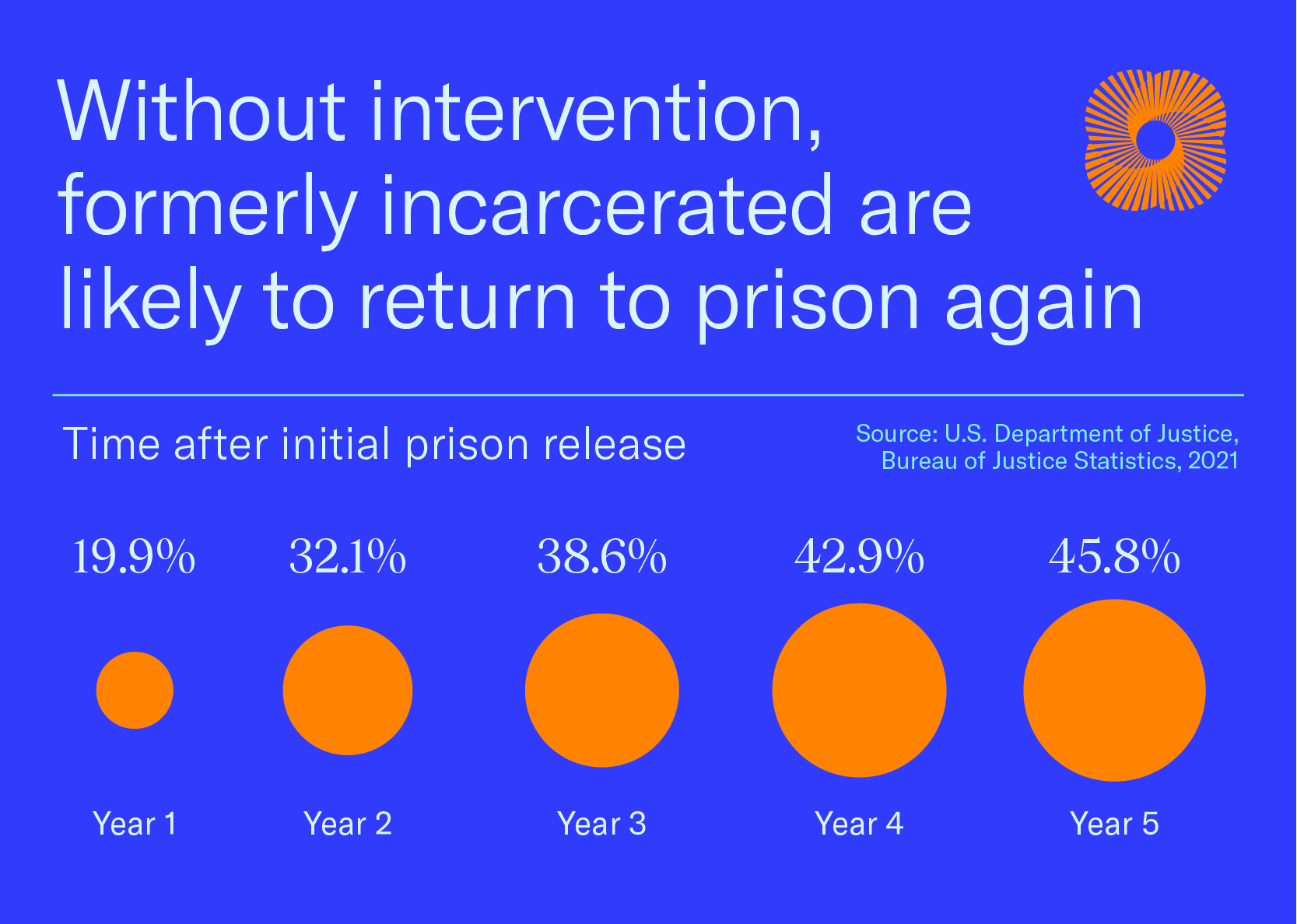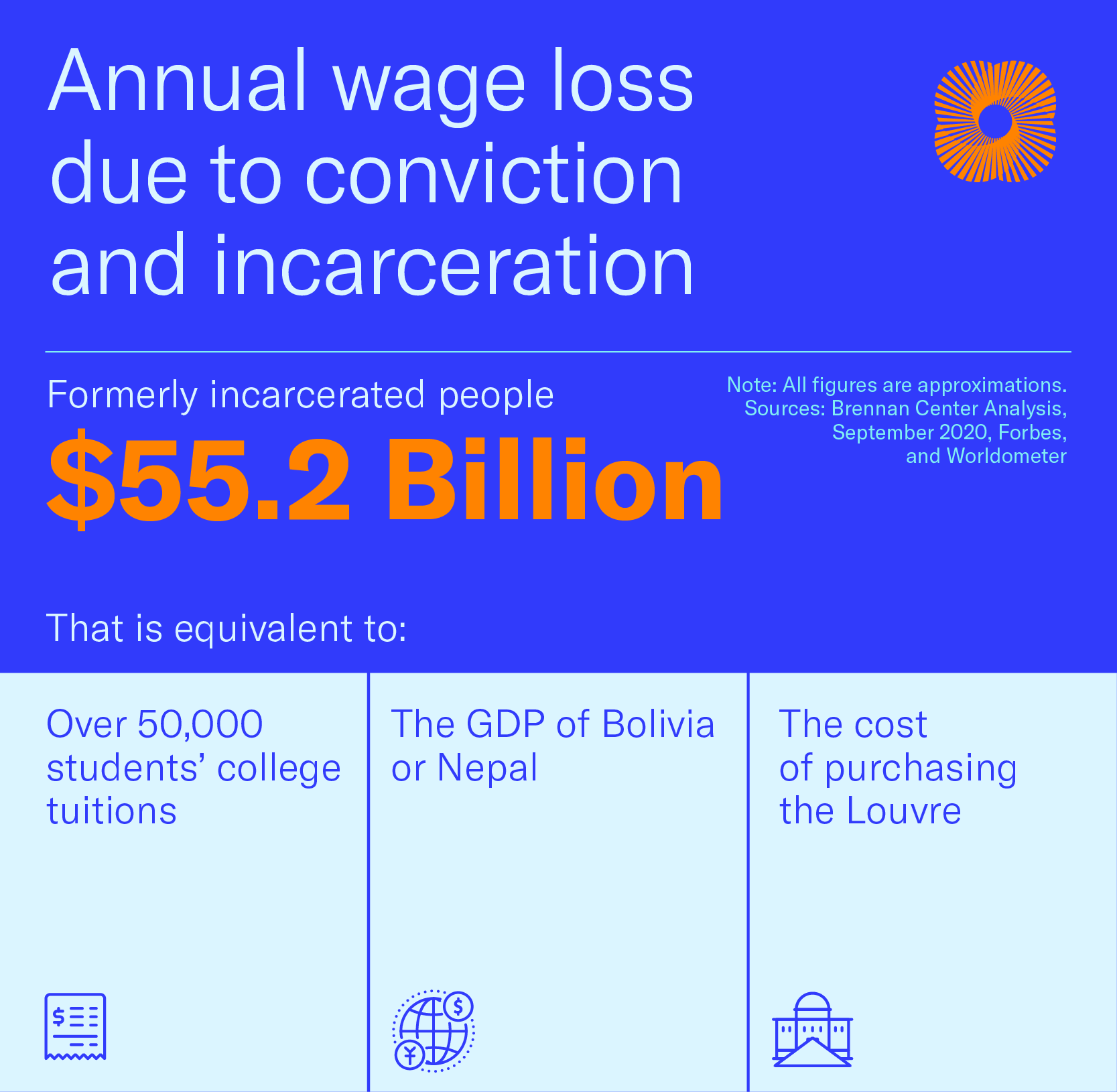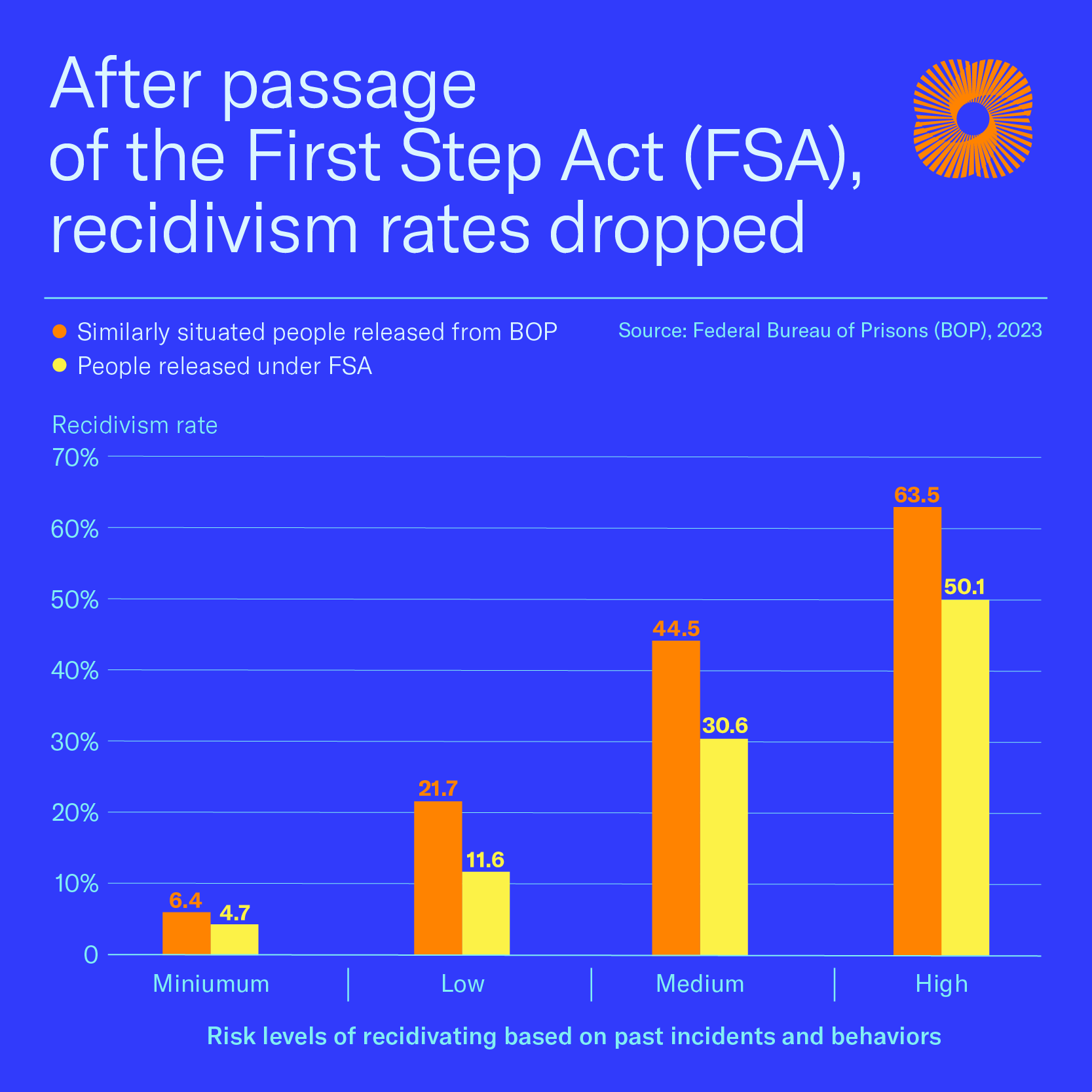 Stephanie Ferguson
Stephanie Ferguson
Director, Global Employment Policy & Special Initiatives, U.S. Chamber of Commerce
Published
September 18, 2024
The current labor market presents a complex landscape for businesses. The U.S. labor force participation rate is presently at 62.7%, indicating that 62.7% of the working-age, non-institutionalized population is either employed or actively seeking employment.
Had the labor force participation rate remained at its February 2020 level, millions more individuals would be part of the workforce today. This shortage is affecting all industries across nearly every state. Even if every unemployed worker filled an open position in their industry, well over a million jobs would still remain vacant.
A significant portion of our potential workforce is sidelined due to high conviction rates, community supervision, and imprisonment. This issue is substantial, as the United States has the highest number of incarcerated individuals in the world.
Our America Works Data Center captures these national workforce trends. This page explores new data revealing how limited opportunities for individuals with criminal records are reducing workforce participation rates and contributing to the worker shortage.
More people in prison means less people working.
-
1.25M
Americans in prison
-
3.7M
Americans on probation or parole
The United States has the highest incarceration rate in the world. Nearly 1.25 million Americans are incarcerated in the U.S. correctional system with an additional 3.7 million on probation or on parole at any time. Each year, roughly half a million individuals, on average, are released from incarceration. This amounts to 79 million, or 1 in 3 Americans, who have reentered into societies and have a criminal record. Without imminent employment opportunities, recently released individuals are likely to return to incarceration.
-
448K
Americans released from incarceration in 2022
-
1 in 3
Adults who have a criminal record

The majority of individuals in prison are working-aged men, a demographic whose labor force participation rate has been declining for years. The high rate of incarceration is a significant barrier to increasing our labor force participation rate. The unemployment rate for individuals with criminal records tends to hover around 30%. For context, the unemployment rate at the height of the pandemic reached 14.8%, and was 4.2% in August 2024.
Yet, the numbers show that formerly incarcerated individuals want to work. More than 93% of formerly incarcerated individuals between the ages of 25 and 44, those in their prime working age, are actively working or looking for work. In comparison, the broad population of individuals in a similar age group (25 – 55) are participating in the labor force at a rate of only 84%.

-
25%
Percentage of convictions that do not lead to prison sentences
More astonishing is the profound effect a criminal record can have on a person’s job opportunities. In addition to the half million individuals released from prison every year, even more Americans accrue an arrest record that does not lead to prison records. Almost 25% of convictions do not lead to prison sentences. For some job requirements, individuals with a criminal record are excluded completely. This often overlooked talent pool is exceedingly large and requires employment to reduce recidivism rates.
Stable jobs for the formerly incarcerated reduce recidivism and benefit society.
Without employment or alternative interventions, recidivism rates amongst state prisoners tend to rise. Over 60% of formerly incarcerated individuals will be arrested again within three years, and over 70% will be arrested again within five years. Within the first year after release, about 20% of formerly incarcerated individuals are likely to return to prison. By year five, 46% are likely to return to prison.

However, formerly incarcerated individuals are 24% less likely to return to prison if they acquired new skills and held a job during incarceration. Additionally, those who are unable to maintain employment experience a recidivism rate of 52% over three years, whereas their peers who maintain employment for one year post-release experienced a recidivism rate of just 16%.
Individuals who secure employment after incarceration are more likely to achieve stability and less likely to return to prison. Offering second chances to returning citizens can lead to reduced employee turnover across the board.
In a recent survey, 66% of employees expressed pride in working for a company that offers training, guidance, or mentorship to individuals with criminal records to help them reintegrate into the workforce. Companies that have adapted their culture to support second chance employees are finding that their overall workforce is becoming more engaged and likely to stay with the company. This results in reduced turnover and higher-quality work, ultimately enhancing the company's performance. At the same time, crime rates decrease while employment rates rise, directly contributing to a more prosperous society.
Formerly incarcerated individuals experience extreme rates of unemployment, hovering around six out of every 10 people being jobless from the time of release to four years after release. Compare this rate to the general population, whose peak unemployment rate during the pandemic reached 15%.
Incarceration costs the economy billions.

The high rate of incarceration and its subsequent ramifications significantly impact our nation’s broader economy in more ways than one. Incarceration imposes significant costs on businesses, communities, and individuals. In 2022, the average annual cost of incarcerating a federal inmate was approximately $43,000 per year, or $117 per day, for inmates housed in a Bureau or non-Bureau facility. For those in residential reentry centers, the average annual cost was $39,000, or $107 per day.
Reducing recidivism through employment supports the well-being of individuals and families directly involved with the justice system and also strengthens the economy. Fewer taxpayer dollars spent on incarceration means more resources can be invested in the community.

Individuals who are justice-involved experience wage disparity throughout the rest of their working tenure. These wage penalties cost the economy billions of dollars and highlight the challenges of re-entering the workforce.
On average, individuals who have been imprisoned face a dramatic wage reduction of 51.7%, amounting to a staggering $55.2 billion annually—equivalent to the cost of purchasing the Louvre. Those with felony convictions, even those that don’t result in prison time, see their earnings reduced by 21.7%, translating to $77.1 billion, a sum that could fund the operation of the International Space Station for 26 years.
Even a misdemeanor conviction can lead to a 16% decrease in wages. Given the prevalence of misdemeanor charges in the U.S., this results in an annual economic loss of $240 billion. This amount could buy every single NFL team and most of the NBA teams in the nation.
As more formerly incarcerated individuals gain employment, they contribute positively to the economy, further enhancing economic growth and stability.
Second chance hires can help industries suffering from labor shortages.
More than 60% of individuals who were incarcerated in state or federal prisons were employed within 30 days of their arrest. Most commonly, these individuals worked in administrative support in waste management services, accommodation and food services, construction, manufacturing, and retail trade industries. These sectors are also experiencing some of the most severe impacts from the current worker shortage, with nearly 1.9 million unfilled jobs in these industries.

During incarceration, individuals have the opportunity to acquire new skills or refine existing ones. Many work in food preparation, library stockroom and store services, maintenance repair and construction, and goods productions. These skills directly translate into industries that are continuously hiring.
Second chance hires succeed.
-
85%
HR leaders who say that second chance hires perform the same or better than other employees
-
81%
Business leaders who say that second chance hires perform the same or better than other employees
While certain limitations around hiring the formerly incarcerated do exist, it is important for businesses to know that second chance hiring is taking place around the country with positive outcomes. Data from SHRM shows that 85% of human resources leaders and 81% of business leaders say that second chance hires perform the same or better than other employees.
Efforts to Address Recidivism

The First Step Act (FSA) of 2018 is a criminal justice reform bill aimed at promoting rehabilitation, reducing recidivism, and addressing excessive sentences within the federal prison system. Individuals released under the First Step Act experience a lower recidivism rate across all risk brackets compared to their peers who were released without FSA's provisions. This reduction is particularly significant among those at medium and high risk of recidivism, based on their past incidents and behaviors.
Implementing second chance hiring necessitates a public-private partnership. The U.S. Chamber of Commerce and the Chamber Foundation’s America Works Initiative strongly support initiatives aimed at addressing recidivism through employment, recognizing that stable and meaningful employment is one of the most effective means of reducing the likelihood of reoffending. To address the labor shortage crisis stifling our nation’s economic growth, business and government must work together to understand the challenges facing specific populations and industries and find ways to overcome those obstacles.
Second Chance Hiring Resources
Guide: Employer Guide to Second Chance Hiring Tax Credits and Programs
Research: The Business Case for Second Chance Hiring
Case Study: America’s Hidden Workforce
Recent Event: Reimagining Futures: Second Chance Employment Forum
For Small Businesses:
Find more workforce data
Visit our other data deep dives covering the current labor shortage crisis and the impact of childcare challenges on our workforce.
About the authors

Stephanie Ferguson
Stephanie Ferguson is the Director of Global Employment Policy & Special Initiatives. Her work on the labor shortage has been cited in the Wall Street Journal, Washington Post, and Associated Press.

Makinizi Hoover
Makinizi Hoover is the Senior Manager of Strategic Advocacy at the U.S. Chamber of Commerce. Her work includes the development and project management of comprehensive data centers that serve as a valuable resource for policymakers, businesses, and the public.

Isabella Lucy
Isabella has created stunning visualizations tackling pressing issues like the worker shortage, the benefits of hiring veterans, the lifespan of small businesses, and the future of work.





